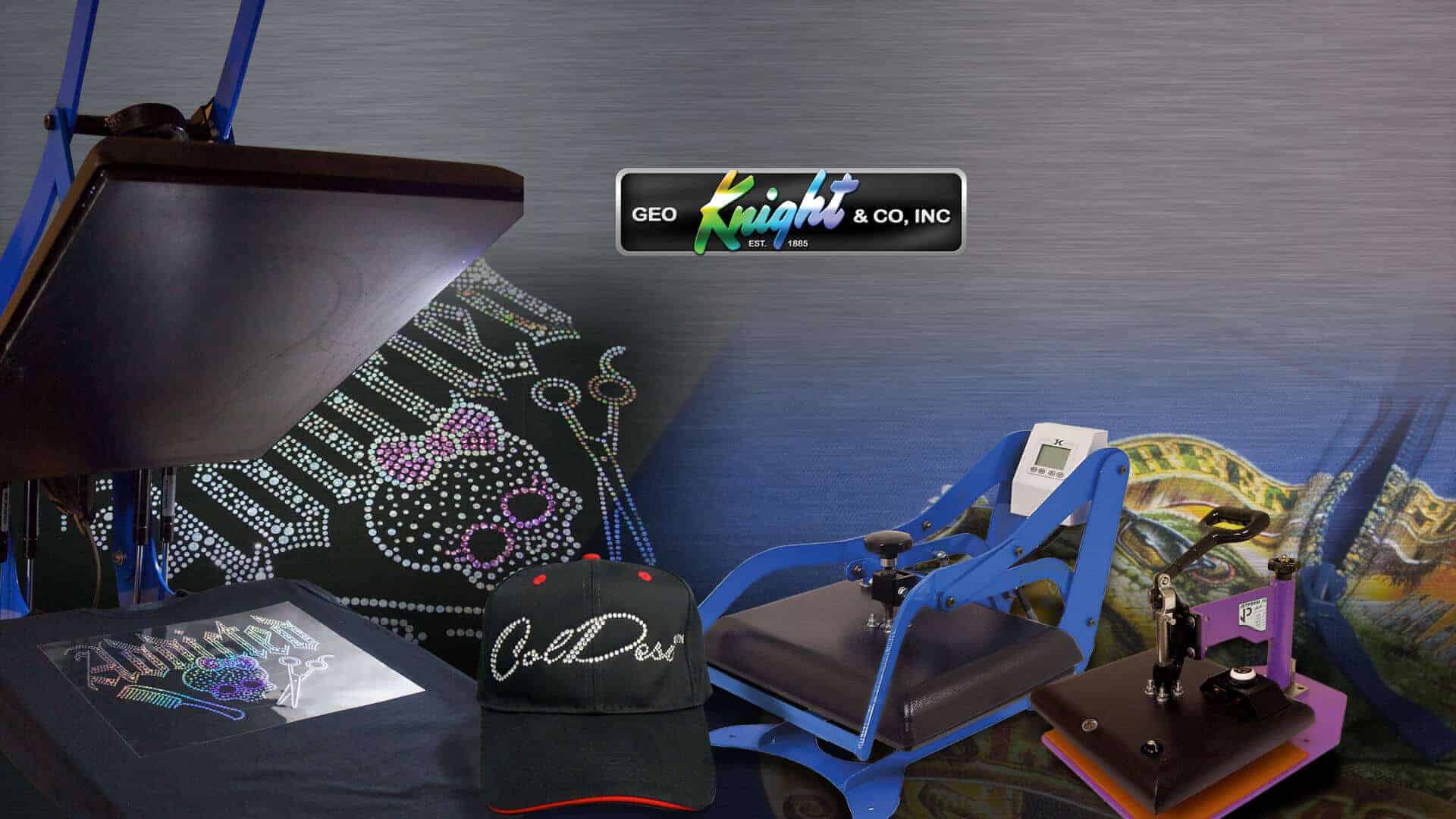A heat press is the foundation of a custom T-shirt business. Things to look for when choosing a perfect heat press (or two!)
All heat press machines do one thing: deliver heat under pressure for a definite amount of time. For professional and high-quality results, standard laminating devices and consumer hand irons simply cannot get close to the temperatures required for a dependable transfer.

Why use a heat press?
To make money, of course! There is no limit to what can be heat pressed: T-shirts, caps, ceramic plates and tiles, mugs, mouse pads, canvas tote bags, lettering, numbers, wood, metal and other fabrics and materials. The right equipment is essential to the success of your business. The heat press machine is no different. In fact, you could see it as one of the hardest working things you will ever own.
What to look for in a heat press.
The selection of designs may make choosing the right heat press a little intimidating, but they all have the same purpose: the commercial use of heat for a transfer onto a printable surface. The most important features when deciding on the perfect heat press for your shop:
- Size
Consider the type of work you will be doing and your space limitations. This will determine the size of heat press (as well as how many) you will need. General sizes of heat presses are: Very small, or “Label Presses.” Often used for small items like baby clothes and small items with seams, like tote bags, where the object is opened and pulled onto the press. The smallest sizes are 4”X 6” to 6”X 8”. Small presses range in size from 9” X 12” to 12” X 14” and are relatively inexpensive and portable. Many designs will range around 8 ½ X 12”, such as printed transfers and other smaller items. A small press is good for small production runs and one-offs. Medium presses, sized 16” X 16”, 15” X 15” and 14” X 16”, are the most popular with decorators. They often have higher wattage for repeated use and cost considerably less than a 16” X 16”. Large presses are 16” X 20” and over, like the Geo Knight 16×20 Auto Clamshell. Few garment decorators need anything larger since an 11” X 17” is the largest preprinted transfer measurements from an inkjet printer. Of course, there are presses up to 20”X 25” and even giant “monster” 40” X 64” presses. If you still think you might need a massive heat press, examine your options first with a ColDesi representative.
- Type
There are two main types of heat presses: Clamshell and Swing Away.
Clamshell presses have platens that lift straight up to open completely. Frequently found in these sizes:
- 11” X 15”
- 15” X 15”
- 16” X 16”
- 16” X 20”
This type of press is easy, efficient and hugely appealing. Platen size and construction in the top and bottom can affect the pressing, depending upon the type of work in your shop. Swing-away presses lift straight up, with the top platen swinging to the right. For work with shirts, the top platen swings to a point just past perpendicular (about 100 degrees). A few models of swing-away presses will have separate “swing-arms” (to the left of the upper platen) for easier movement. This is a handy feature on larger presses. Standard swingers range between 9” X 12” and 16” X 20”, with a few larger models for specialty work. Other types of heat press include the Geo Knight DK7 4×7 Cap Press, used for curing the design on the front side of conventional headwear. Similar to a standard clamshell, the DK7 grips the rear of the cap and presses it down to the heated surface. DK7 Cap Press comes with a standard size platen for caps, as well as accepting other interchangeable platens for specific headwear.

Features
Air Automatic heat presses use compressed air, push button operation and requires little effort to manage. They are generally larger (in the 16” X 20” range) and can be quite expensive for startups and smaller shops. Instead of a high-end automatic press, you may want to consider several better-quality manual presses for efficient and economical production.
Digital or Analog?
Time and temperature are more accurate with digital timers than analog, which often only go to 60 seconds. Reading from a small gage can be hard to view correctly. For most garment decorating shops, a digital heat press is not a deal breaker, but they can make your shop more efficient, giving you less to deal with. Platens are another valuable consideration. An elevated platen gives you more flexibility in the designs you offer. For example, it can let you press one side of a shirt and then take the shirt and press a second design inside. Teflon-coated platens also make the process easier.
Consider your product line
Interchangeable platens can help you press designs onto odd sized products, like mugs, helmets and other hard surfaces. Think about the direction of your product line and discuss it with your ColDesi sales representative for the right heat press to suit your needs. There are other benefits, both form and function, which could be relevant to you. Having two or more presses is another choice. Start your search for the right heat press by visualizing exactly how you approach your business. Select a press that best offers you those benefits. Features are only a benefit if they make your business profitable. ColDesi is a distributor of Geo Knight Heat Presses, and can help become more profitable by choosing the right equipment and supplies. For more information, contact ColDesi.com or call 877-793-3278.




